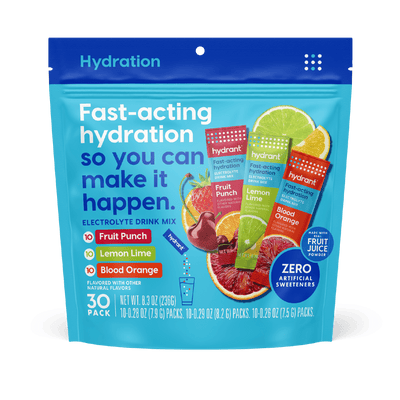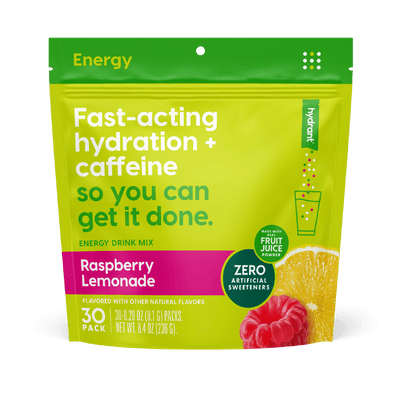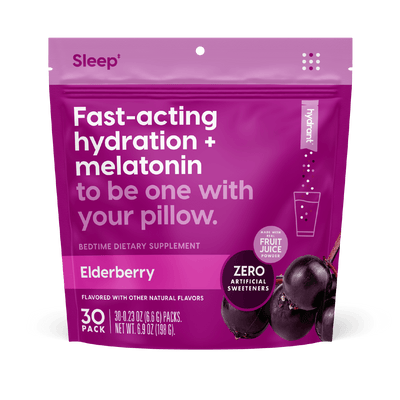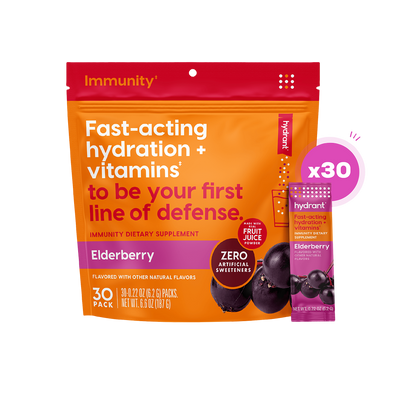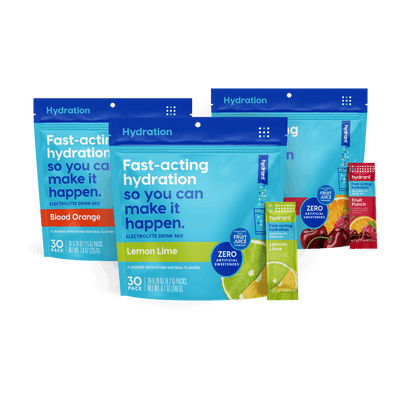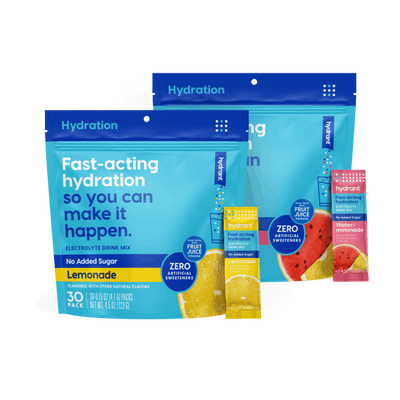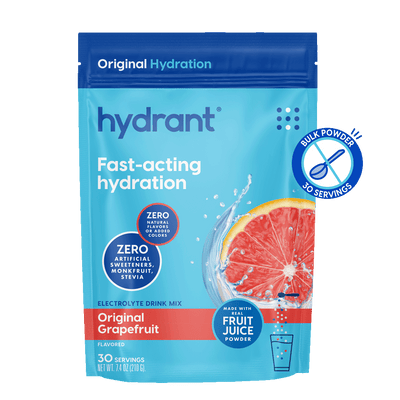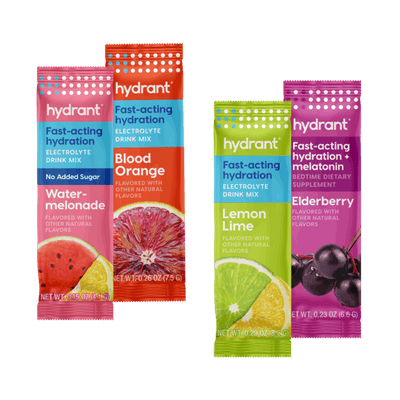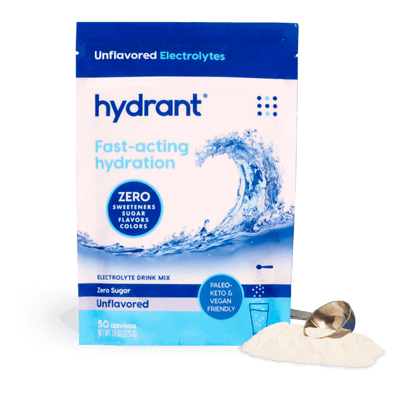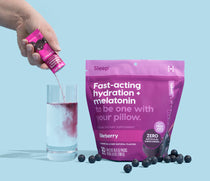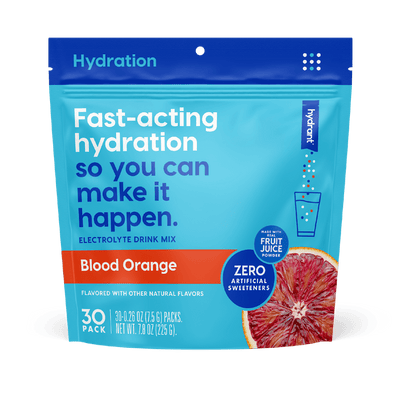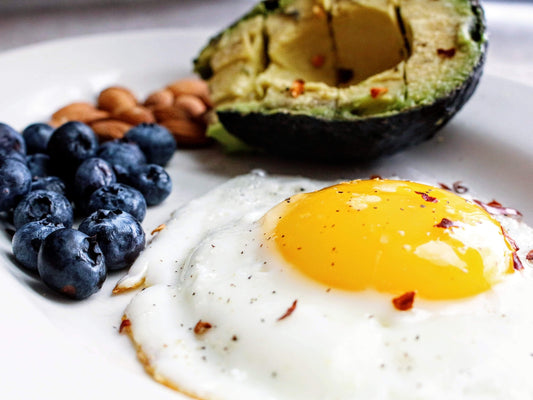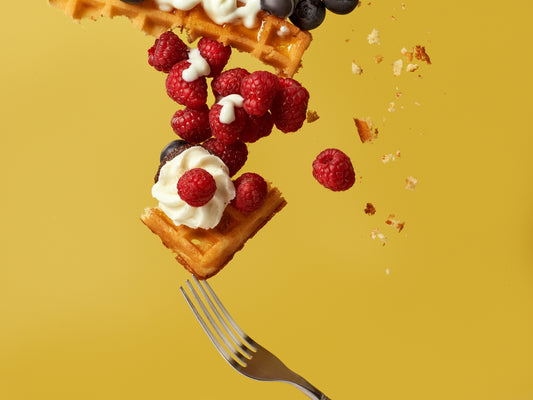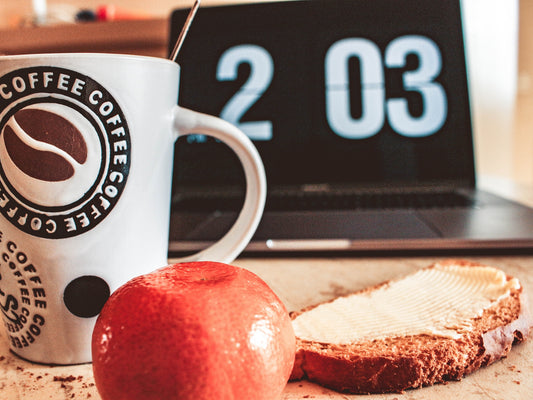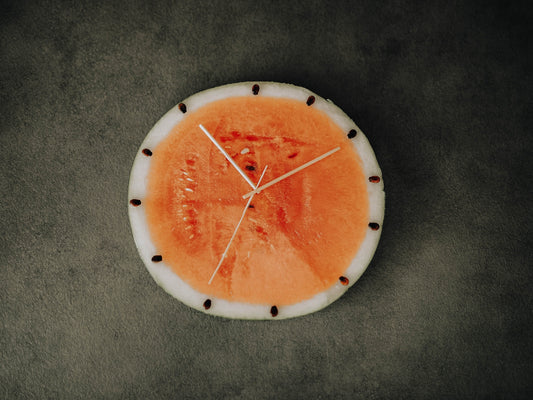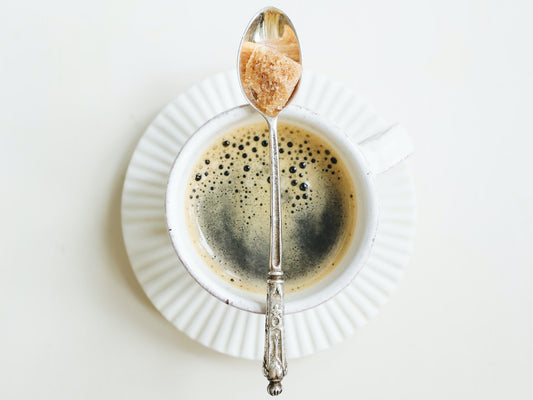Monk fruit extract is an alternative natural sweetener used in food & beverages, derived from the monk fruit. It is used to help sweeten a product without adding the calories associated with refined or cane sugar. Monk fruit extract is a great alternate solution for those looking for products with ingredients lists to support a no-sugar lifestyle or diet (like those following a keto diet, for example).
In this article, we break down the history of monk fruit, discuss monk fruit extract compared to other natural sweeteners, and reflect on the pros and cons of monk fruit.

To start, let’s begin with sugar. We know that excess sugar intake can result in:[i]
- Weight increases
- Higher risk of heart disease
- Unhealthy skin
- Cellular aging
- Lower energy levels
—and other health risks. Many people are adopting different diets or lifestyles to cut back or avoid sugar altogether. If you choose or already follow a no-sugar or limited sugar lifestyle, alternative sweeteners are a great option to still add sweetness to a food or beverage, without increasing the calories.
One of these is none other than monk fruit (a.k.a. monk fruit extract)!
What Is Monk Fruit?
With zero calories, being derived from real fruit, and more sweetness than traditional refined sugars, monk fruit is starting to rise in popularity. Interestingly, the signature sweetness of monk fruit is created from a specific antioxidant known as mogrosides instead of the fruits natural fructose and glucose sugars.[ii] Antioxidants have known immune-supporting functions and can help fight off free radicals that result in various illnesses and diseases.
The excellent news with immunity and monk fruit doesn't end with mogrosides. Antimicrobial properties exist within monk fruit, which fosters a healthy bacterial balance in our guts that serve to keep our immune systems functioning optimally. That said, monk fruit alone is not proven nor intended to cure, prevent, or treat any illness. We include this information here to help you understand the broader picture with monk fruit extract.
One characteristic of monk fruit is its sweetness, allowing manufacturers to use small doses to achieve a sweetness profile instead of including lots of sugars. To some, 1/64 of the teaspoon measurement of monk fruit extract equals the sweetness of a whole teaspoon of sugar.
Let’s take a look at the nurturing history of monk fruit to better understand where things stand today with this natural sweetener.
Monk Fruit History
Are you wondering where the “monk” portion of “monk fruit” came from?
It’s known that 13th-century Buddhist monks were the original users of monk fruit.[iii] When these Buddhist monks practiced their faith, they were developing new farming processes that help protect monk fruit's survival. If you were to look at a monk fruit photo, you'd find that it resembles fruits such as melons.
Monk fruit is native to Thailand and Southern China. Americans first received monk fruit seeds in 1941 to begin growing. Australia was also identified as a potential region for growing the fruit.[iv]
Next time you see an ad for monk fruit, know that the commercial market for monk fruit in the US is relatively new even though China's residents have been utilizing it for thousands of years. The first significant step toward introducing monk fruit to mainstream markets occurred in 1995 when Procter and Gamble patented a way to eliminate interfering tastes within monk fruit and produce a usable sweetener.iii
Fast forward to today, and you'll find that monk fruit extract is commonly sold commercially under multiple brand names and is used in various products as a sugar alternative. You might be familiar with stevia, another common natural sweetener that acts as a substitute for sugar. Let’s take a look at how monk fruit stacks up against stevia.
Monk Fruit vs. Stevia
We've mentioned that monk fruit is much sweeter than sugar, but we haven't mentioned that its counterpart, stevia, is 200-300 times sweeter than sugar.[v] Interestingly, the FDA has approved specific refined forms of stevia, but crude and whole leaf stevia extracts are not government approved.
Pros and Cons of Stevia
Similar to monk fruit, stevia does not contain calories. People with diabetes are known to gravitate toward stevia as it doesn’t raise blood sugar levels.
It's worth noting that stevia can come in multiple forms, including:
- Powder
- Liquid
- Granule
The pros of stevia are looking pretty similar to monk fruit's upsides, so let's uncover the cons of stevia to gain a clearer perspective.
One of the downsides reported with stevia includes nausea, bloating, and digestive discomfort. Others turn away from stevia because they don’t like its aftertaste, citing that it’s unpleasant, bitter, and sickly. Monk fruit does have an aftertaste to some, but it’s less pronounced than stevia. Now let’s see how monk fruit stacks up.
Pros and Cons of Monk Fruit
Similar to stevia, monk fruit sweeteners don’t impact blood sugar levels and contain zero calories.
Currently, there is no evidence that reflects monk fruit’s ability to produce adverse side effects. Some people reference that they don’t like its aftertaste, but like all products (monk fruit, stevia or not), taste is personal. While crude stevia is considered unsafe by the FDA, monk fruit is certified GRAS by the FDA, which means it’s generally regarded as safe in food.[v]
Monk fruit is more difficult to grow than stevia and has higher importation cost, thus making it less common than sugar alternatives like stevia. While allergic reactions from monk fruit can occur, it’s much more common for people to experience allergic reactions from other natural sweeteners, like Stevia.[vi]
Monk Fruit Compared to Other Sweeteners and Sugar Substitutes
Artificial non-nutritive sugar substitutes are commonly available and exist on most restaurant tables, so how do they compare to monk fruit?

Artificial non-nutritive sugar substitutes can contain ingredients like aspartame and sucralose, which are undesirable to some. Users of market-leading non-nutritive sugar substitutes have reported negative side effects like bloating and even allergic reactions. As mentioned earlier, monk fruit has not yet been shown to produce adverse side effects, even when consumed excessively.[vii]
Many people consider sugar alcohol to be more natural than artificial non-nutritive sweeteners. It's important to know that consuming sugar alcohols can cause the same digestive issues that artificial sweeteners produce.
Monk Fruit & Hydration
We’re committed to keeping Hydrant products free of artificial sweeteners, stevia, and synthetic colors. So when we launched our No Added Sugar line, we turned to monk fruit to help craft the right flavor profile and light sweetness in our Pink Grapefruit and Lemonade flavors. Our No Added Sugar line still has the same taste and hydration benefits as our other products, but can support those who follow a reduced or no-sugar lifestyle and diet.
If you practice a keto or paleo diet, monk fruit can also be a great sweetener to add to your routine (not just when you’re replenishing your electrolytes!). Natural, plant-based, and low in carbs, it’s a great option to consider if you’re craving something a little sweet!
Monk Fruit Takeaways
Monk fruit has been marked GRAS (generally recognized as safe) by the United States FDA since 2010, along with other international health agencies.[viii] Aside from recent government approval, monk fruit has been used in Asia for thousands of years and has not produced negative side effects—even when consumed in large amounts.

One perk associated with Monk Fruit is its flexibility in application. You can mix monk fruit extract into:
- Tea
- Coffee
- Smoothies
- Oatmeal
- Yogurt
- Desserts
The list of ways to utilize monk fruit doesn't end there. Soups, sauces, brownies, salad dressings, and even electrolyte-drinks (like our No Added Sugar line) are additional examples of foods that can benefit from monk fruit. Do what works best for you, your wellbeing, and your daily routine.
